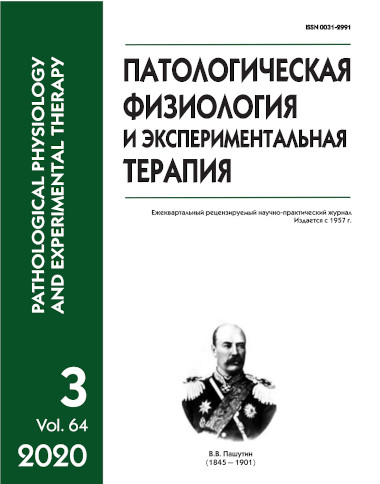Changes in the phenotype of peripheral blood lymphocytes from healthy individuals and patients with ischemic heart disease in exogenous hyperhomocysteinemia
Abstract
Aim. To study changes in the phenotype of peripheral blood lymphocyte induced by homocysteine and homocysteine thiolactone in a short-term cell culture. Methods. Venous blood was obtained from 15 conventionally healthy, non-smoking male volunteers aged 35.4 ± 4.7 years and 16 patients with ischemic heart disease (functional class II stable angina). Blood was collected from the ulnar vein into tubes containing heparin Li as an anticoagulant. Then 1 ml of RPMI-1640 culture medium (Miltenyi BiotecGmbH, Germany) with 10% of serum was added to each of 3 sterile plastic tubes containing 1 ml of blood each. A solution of either homocysteine (50 μmol/l) or homocysteine-thiolactone (50 nmol/l) was added to two of these tubes. The remaining two tubes (control) contained an equivalent volume of saline or the culture medium. The leukocyte phenotype was determined after 4 hours of incubation at 37°C in 4.8% CO2. Results. Total counts of leukocytes, monocytes and neutrophils did not significantly differ between the study groups. Only an increase in lymphocyte count was observed in blood samples from IHD patients due to increases in all lymphocyte subpopulations. Quantitative changes in the phenotype of lymphocytes exposed to high doses of homocysteine and homocysteine thiolactone were found only for the T-lymphocyte subpopulation; in blood samples from conventionally healthy volunteers, the T-lymphocyte count was decreased due to a decrease in the T-helper fraction. In blood samples from IHD patients exposed to hyperhomocysteinemia, the number of T-lymphocytes did not differ from the control. However, the T-helper level was decreased by 20% similar to that in blood samples of healthy volunteers. The level of cytotoxic lymphocytes in the cell culture from conditionally healthy volunteers exposed to homocysteine was increased by 50% and in the culture exposed to homocysteine thiolactone, it practically doubled. In the blood from IHD patients exposed to homocysteine or homocysteine thiolactone, this lymphocyte fraction was increased by 70%. Conclusion. High doses of homocysteine reduced the number of T-helpers and increased the number of cytotoxic lymphocytes. These changes were more pronounced in blood samples from patients with atherosclerosis. Mechanisms of this phenomenon require a further study.






